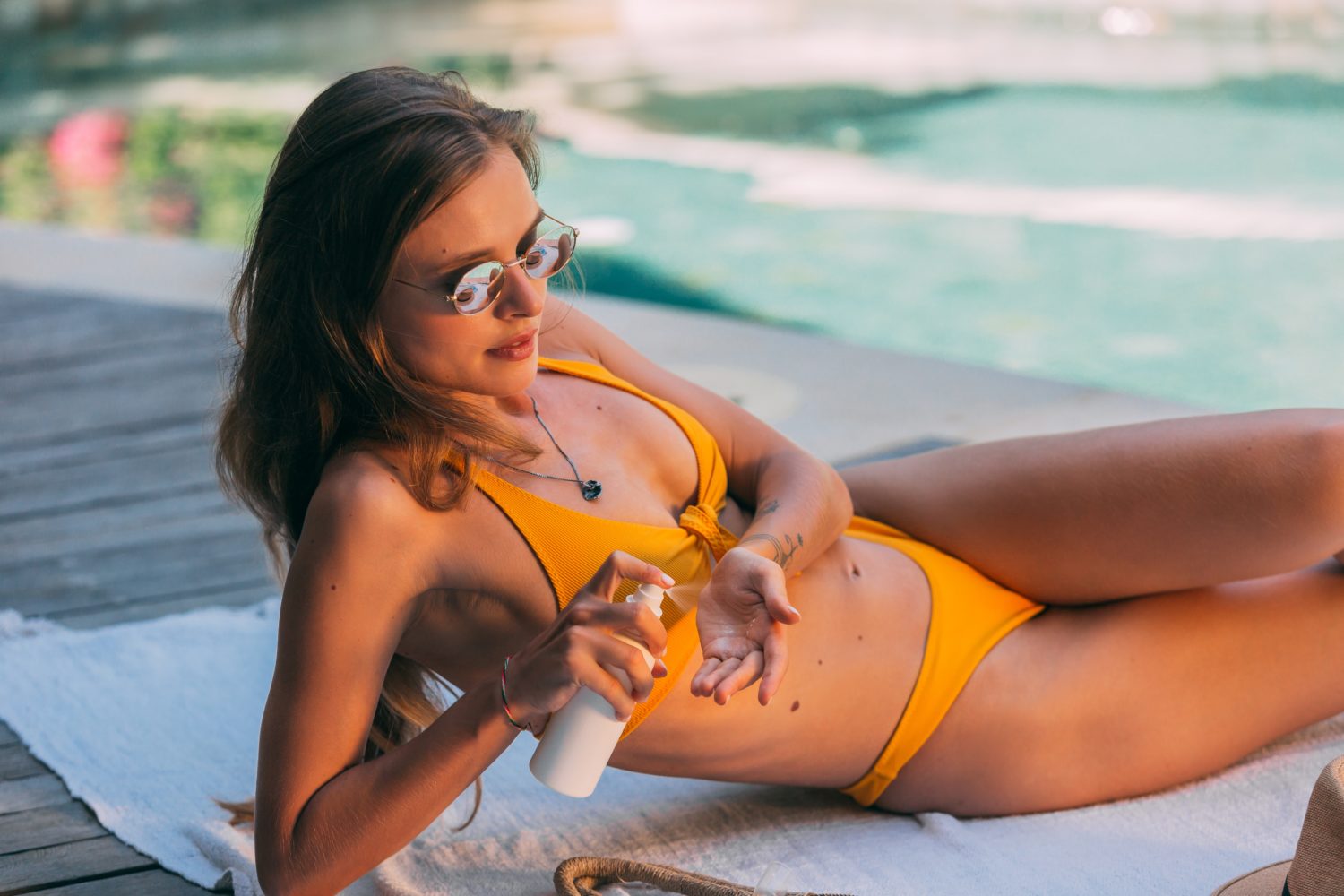
Going for a tan can be a very daunting task. Whether suntanning or going to a tanning booth, the idea of laying there while heat is going to your skin can be a little scary.
Here are some safety tips on how to get that golden glow without damaging your skin.
Also, visit here to discover how to get tan off…
Exfoliation
The first thing to remember when going for a tan is to exfoliate your skin.
Regardless of what method you decide to pursue, this is a must before any session.
Exfoliating your skin simply means removing dead skin cells found in your body, and is done to avoid dry skin. Tanning with dry skin can negate the results, so make sure to exfoliate before tanning.
Before exfoliating, keep your skin type in mind. This will determine what kind of exfoliant is the best for you.
Skin types include normal skin, sensitive skin, dry skin, oily skin, and combination skin.
There are two methods present in exfoliating skin.
Mechanical
This just means manually scrubbing off the dead skin. Physical exfoliants include sponges, brushes, or scrubs.
Make sure to be gentle when scrubbing off the dead skin. Take your time, and they should fall off. Scrubbing too hard might irritate or damage your skin, and we wouldn’t want that.
Chemical
This uses products to remove dead skin by gently dissolving them.
Although most products are guaranteed safe to use, this might not be optimal for those with sensitive skin types. So if you are someone with that type of skin, then I recommend manually scrubbing them off.
Choose the Right Tanning Lotion
There are many tanning lotions out on the market. It can get confusing to pick which is the right one for you.
Luckily, different types of lotions cater to different skin types.
Accelerators
Accelerators are recommended for those who are just starting out with indoor tanning. If this is your first time tanning, then you most likely do not have a base tan. These are a good option for giving you a good base tan on your first try.
Bronzers
Bronzers can be a little tricky to distinguish. In order to keep it simple, they enhance the tan by giving a darker tone. This means that you will need to have a base tan first before trying out a bronzer.
So most likely, use this type of lotion once you have achieved your desired base tan and you want to deepen the tan a bit.
There are two specific types of bronzers that cater to different skin types and preferences.
Tingle Lotions
Tingle lotions are a type of bronzer that specialize in micro-circulation.
Micro-circulation causes the blood in your skin to rise. This makes it easier for the UV light to reach the oxygen from the blood of your skin.
This might not be suitable for people with sensitive skin. Using this will cause some tingling in the skin, hence the name.
It is also important to not put this on your face.
Coolant
If you have a sensitive skin type, then this might be the one for you.
Instead of a tingling sensation, this lotion gives a refreshing feeling that you might prefer. It will also make you feel cooler after your tanning session.
Sunscreen
Now that you have exfoliated and chosen your tanning lotion, there is one important product you need to add — sunscreen. Any activity that involves exposure to UV light demands the inclusion of sunscreen.
Putting sunscreen is essential in protecting your skin from UV light. I recommend using sunscreen with an SPF level of 50. Use it 20 minutes before you go get a tan, so it has time to settle on your skin.
I also advise applying sunscreen after every 2 hours for optimal protection.
Wear Goggles
The only thing that the UV rays should be hitting is your skin. Your eyes should be protected while tanning.
Wear a pair of goggles during your tanning session to ensure that your eyes are safe from UV rays. This will most likely be a requirement if you go to a tanning salon, so be sure to bring one before leaving your house.
Pro-tip: If you want to avoid having some noticeable lines on your face, get goggles with thin straps.
Lip Balm with SPF
Apart from your eyes, your mouth should also be protected from UV light. To ensure this, put lip balm with SPF protection on your lips as well.
Be Aware of the Time
When you start having your session, always be aware of the time. You don’t want to spend too much time in the sun or in a tanning booth.
If you decide to go out for a sun tan, bring a timer with you, or just use the timer on your phone. The recommended time to be under the sun is about an hour. Set your timer to an hour and have it near you so you will be able to hear the beep.
If you go to a tanning salon, there should be someone keeping track of your time to make sure you don’t stay there for too long.
Switch Positions
To avoid burning your skin, switch positions from time to time.
You want to avoid long exposure at any cost. At best, you will have noticeable tan marks because you left out parts of your body since the UV rays didn’t reach them. At worst, you burn and damage your skin due to long exposure.
Keep switching to even out the effects of the tanning process, all while protecting your skin from potential harm.
How Long Should You Spread Out Your Tanning Sessions?
Your first tanning session in a tanning booth should last for about four to five minutes. Getting a base tan takes a while and requires multiple sessions.
As you have more sessions, gradually increase the duration by one minute. It should only take ten sessions until you achieve your desired base tan.
Now how long should you spread out your sessions? You don’t want to spread them too far out. You want the tanning to take effect efficiently, so don’t take too long for your next session.
At the same time, you shouldn’t have those sessions consecutively. Your skin needs to cool off and take a break from UV lights.
Spread them out for around two to three days until you have achieved the desired base tan. Once that happens, you can have your tanning sessions once a week.
Stay Hydrated
Exposure to UV rays can also dehydrate your skin. Once you have finished your tanning session, make sure to replenish all the water that you lost.
The best way to keep yourself hydrated is by drinking water. Drink water both before and after your tanning session in order to maintain hydration for both skin quality and overall health.
Moisturize
The next thing to keep yourself fresh and hydrated after tanning is to moisturize your skin. One of the best ingredients you need to look for is hyaluronic acid. This allows the skin to relubricate and rehydrate itself, which will help make your tan glisten and glow instead of looking dry and dull.
Shower
The last thing to do after tanning is to shower.
But you might be asking, should I immediately take a shower?
As much as possible, don’t make showering the first thing you do after tanning, especially if you use a bronzer.
This is because applying water through showering will wash away the effects of the tan, rendering the session useless. At the same time, you should have applied moisturizer to yourself after you tanned.
Wait a few hours until the tan and the moisturizer have taken full effect. Once that has occurred, you can now take a shower. This usually takes about eight hours at max.
Conclusion
Tanning can be dangerous if not done correctly, but don’t let this statement stop you from your desire to have tanned skin.
As long as you follow the preparations, practice safety tips, and tan carefully, you’ll be sure to safely acquire that dark tan you oh so desire.







